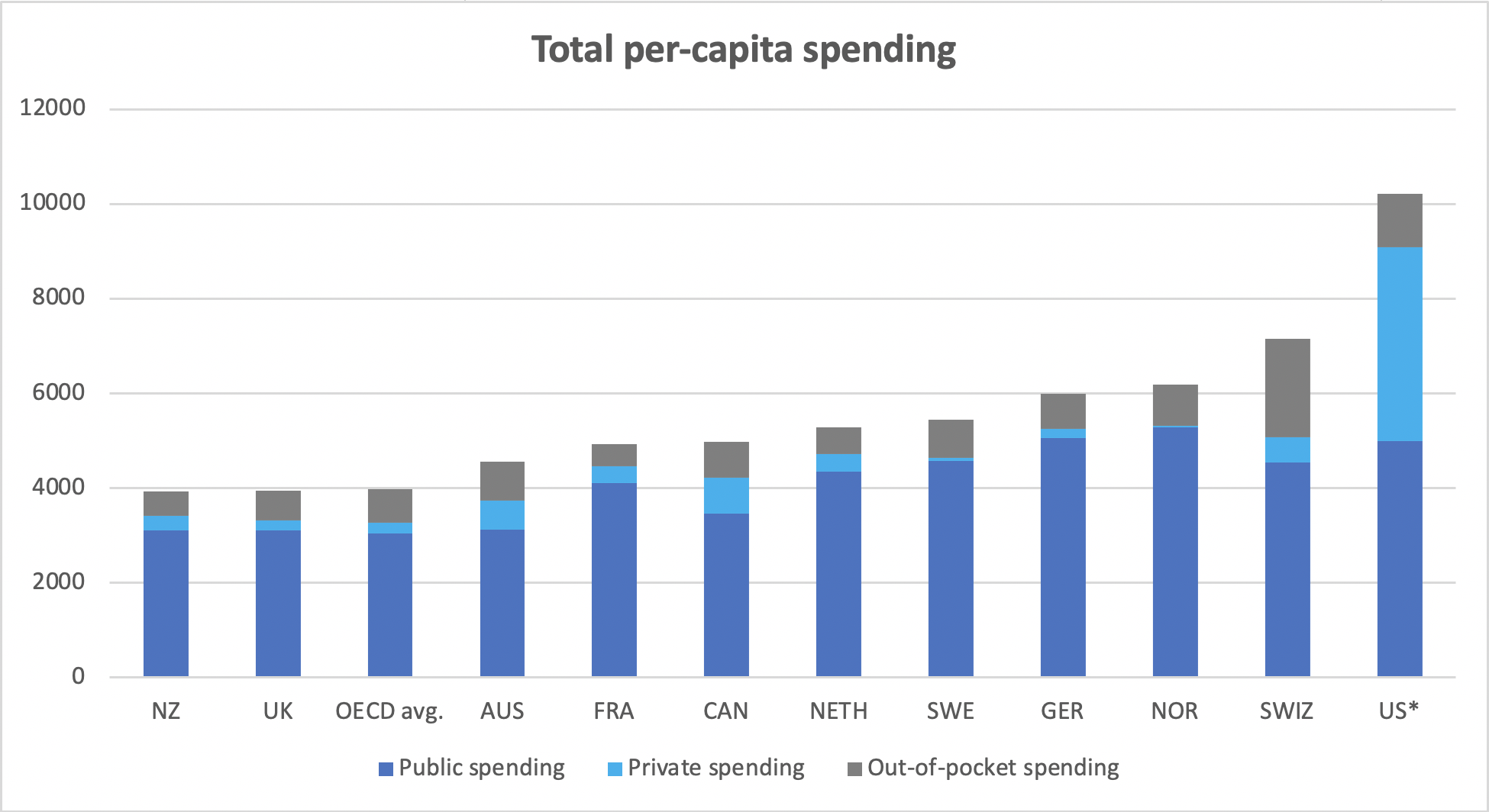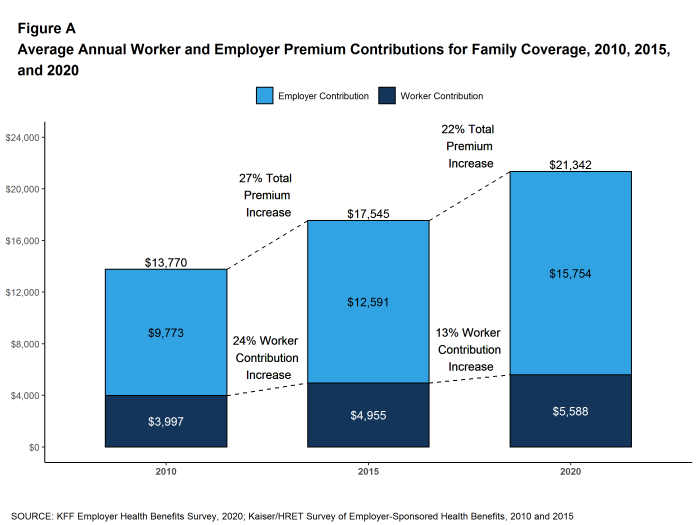ADVERTISEMENT
Who Pays for Health Care?
US public spending amounts are similar to other industrialized countries, but private spending and out-of-pocket spending are higher than most. Consider payment for health care as coming from three buckets: public spending (government), private spending (commercial insurance, including employer-sponsored), and out-of-pocket spending (consumer).

Per capita health spending in the US exceeds $10,000, more than two times higher than in Australia, France, Canada, New Zealand, and the UK. While Organization for Economic Cooperation and Development (OECD) comparisons of investment in health care by industrialized nations show that US Public spending on health care is about the same as others, at $4092 per capita US private spending is more than five times higher than Canada—the second-highest private spender. In Sweden and Norway, private spending made up less than $100 per capita. As a share of total spending, private spending is much larger in the US (40%) than in any other country (0.3%–15%).
In 2019, the average US resident paid $1122 out-of-pocket for health care, which includes the expense of premiums, copayments for doctor’s visits and prescription drugs, and health insurance deductibles. Only the Swiss pay more, while residents of France and New Zealand pay less than half of what Americans spend.
New payment models promoted over the past ten years by CMS through the Affordable Care Act have resulted in multiple governmental programs that may be blunting the curve of escalating costs, although this is debated. Health care payment and care model changes in the private sector are lagging. And 49% of the country's total population, about 156 million Americans, receive employer-sponsored health insurance (also called group health insurance) according to recent data from the Kaiser Family Foundation.
The Kaiser Family Foundation, which reports annual costs of health insurance, reported averages for a family of four of $1619 (employee contribution) and $4819 (employer contribution) for a total cost of $6438 in 2000. The 2020 total cost of $21,342 is over three-times higher. See Figure A. Inflation over that time period represents only $2400 of the nearly $15,000 increase.

Source: https://www.kff.org/health-costs/report/2020-employer-health-benefits-survey/
Although patients may be feeling the increasing costs of health insurance in their premiums, deductibles, and co-pays, it is difficult for them to know how to reduce costs while receiving care. Price transparency could help, if patients had the time, information, and freedom needed to “shop” for more economical care. Congress is currently debating increasing price transparency for consumers. But, the health care market is not like usual markets. The consumers, or patients, do not directly experience the cost of their care. This is price insensitivity. For example, although the cost of a very expensive drug may be largely paid for by the insurer, patient out-of-pocket costs may be significantly reduced by a pharmaceutical company-provided coupon which reduces the patient’s copay, furthering patient price insensitivity.
Historically, employers have relied on insurance company partners to manage health care administration and costs and faced the challenge to fund the escalating costs by managing their budgets, modifying benefits, and passing a portion of the increase on to their employees in the form of higher premiums, deductibles and copays. But employers are increasingly getting more directly involved in managing the rising health care costs, striving to hold providers more accountable for quality, safety, and efficiency.
According to Neil Goldfarb, President and CEO of the Greater Philadelphia Business Coalition on Health (GPBC), “many of today’s innovations in value-based purchasing had their roots in the efforts of large national employers, and regional business coalitions on health, but, by and large, employers have not successfully leveraged their purchasing power to demand value improvement from health plans, provider organizations, and service vendors. However, as cost pressures continue to build, we are seeing more employers coming to the table and serving as change agents.”
“Payviders” are created when payers and providers collaborate to meet joint goals of reducing financial risk, increasing profitability for both organizations, and providing higher quality medical care to patients.
Employers are also seeking to self-educate by forming organizations such as the Global Chief Medical and Health Officer Network (GCMHON) sponsored by IBM/Watson Health, and GPBC, a member of the National Alliance of Healthcare Purchaser Coalitions. These share best practices and collaboratively learn how to promote value-based health care for their employee populations. Occupational medicine leaders and human resources professionals are benefitting from training in the principles of population health and value-based care. At the Jefferson College of Population Health, we have developed Certificate and Masters-level education in Population Health through a new track: Population Health for Employers.
So, who ultimately pays for health care? Although public and private organizations pay the bills, each of us—whether through Federal and State taxes, our organizational budgets, or out-of-pocket expenses—pay for health care. Applying principles of population health can help us to do that more efficiently.
Disclaimer: The views and opinions expressed are those of the author(s) and do not necessarily reflect the official policy or position of the Population Health Learning Network or HMP Global, their employees, and affiliates. Any content provided by our bloggers or authors are of their opinion and are not intended to malign any religion, ethnic group, club, association, organization, company, individual, or anyone or anything.




















